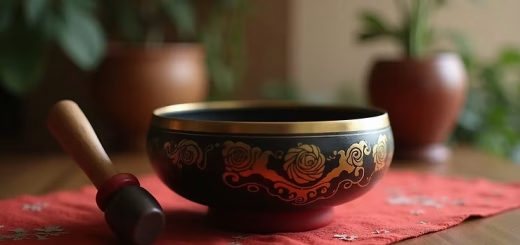How do they make Crystal Singing Bowls?

Crystal singing bowls have surged in popularity due to their enchanting sounds and remarkable healing benefits.
What are Singing Bowls | Singing Bowls in Daily Life
How do they make crystal singing bowls? Widely used in meditation, sound therapy, and spiritual practices, these bowls emit vibrations that resonate deeply within us. Have you ever paused to consider how they are created? This blog post invites you on a journey through the captivating process of making crystal singing bowls, revealing the artistry and skill involved in their creation.
Understanding Crystal Singing Bowls
Before we explore the manufacturing process, let’s clarify what crystal singing bowls are. These bowls are primarily made from high-purity quartz crystal, which lends them impressive acoustic qualities. Available in various sizes, these bowls generate calming sounds when struck or played with a mallet, enhancing meditation and relaxation experiences.
The quality of sound produced by these bowls is directly influenced by the purity of the quartz. Higher-quality quartz translates to richer vibrations and a more profound listening experience. For instance, bowls made from 99.99% pure quartz produce sounds that can resonate up to 100 times longer than those made from lower-quality materials.
Sourcing the Quartz
The journey to creating a crystal singing bowl starts with sourcing natural quartz crystal. High-quality quartz is generally mined in areas known for their excellent geological formations, such as Brazil or Madagascar.
Quartz can be found worldwide, but certain locations yield purer forms that significantly enhance the bowls’ acoustic properties. Responsible artisans often prioritise suppliers that follow ethical mining practices. For example, companies like The Crystal Singing Bowl Co. have established robust guidelines for sustainable sourcing.
Once the quartz is acquired, it may undergo preliminary assessments to determine its quality. This ensures the raw material is suitable for crafting high-quality bowls.
- Crystal singing bowls have surged in popularity due to their enchanting sounds and remarkable healing benefits.
- Understanding Crystal Singing Bowls
- Sourcing the Quartz
- The Melting Process
- Molding the Bowls
- Shaping and Polishing
- Tuning the Bowls
- Quality Control
- Engraving and Finishing Touches
- Packaging and Distribution
- Final Thoughts
The Melting Process
The next critical step is melting the quartz. During this phase, the quartz is heated in furnaces, reaching temperatures often exceeding 3,000 degrees Fahrenheit. This intense heat transforms the solid quartz into a pliable substance.
At this stage, any impurities are eliminated, ensuring that the final bowls consist exclusively of high-purity quartz. Proper temperature control is pivotal, as overheating can damage the crystal and compromise its sound quality.
For instance, even a slight temperature variance of just 100 degrees can affect the viscosity of the quartz, potentially altering the end product’s acoustic properties.
Molding the Bowls
Once melted, the quartz is carefully poured into molds that dictate the shape and size of the bowls. The design of these molds is essential, as the size and depth of each bowl directly affect its sound quality.
After pouring, the molten quartz cools and solidifies. Removing the bowl from the mold requires significant skill; any flaws can lead to undesirable sound characteristics. Skilled artisans often ensure that molds are tailored to produce specific resonance frequencies, enhancing the bowls’ sonic uniqueness.
Shaping and Polishing
After molding, the bowls undergo a detailed shaping and polishing phase. Artisans grind and sand the interior and exterior surfaces, refining both look and acoustic performance.
During this process, they may discover small imperfections in the quartz, which must be removed to ensure the bowl is not only visually appealing but also capable of producing rich, harmonious tones. A well-shaped bowl can resonate significantly better—producing a sound that is often described as pure and divine.
Each bowl is tested at multiple stages. This iterative process may involve making minor adjustments to achieve the desired sound. In fact, reports suggest that some artisans test over 100 bowls before achieving their ideal resonant quality.
Tuning the Bowls
Tuning is a vital stage in the crystal singing bowl creation process. Each bowl must align with a specific frequency, resonating with different energy centers—known as chakras—in the body.
Artisans typically tune bowls by striking them with mallets and carefully listening to the sound. They might adjust the shape slightly if needed, a process that can take several hours to perfect. Research indicates that bowls tuned to the root chakra vibrate at around 256 Hz, while those for the crown chakra resonate near 963 Hz.
Some artisans might also utilize tuning forks to fine-tune the frequency, ensuring each bowl can generate a pure, sustainable sound beneficial for meditation and healing.
Quality Control
Before reaching consumers, crystal singing bowls undergo rigorous quality control checks. This inspection guarantees that each bowl meets stringent appearance and sound standards.
Any bowls that don’t meet expectations are either reworked to perfect their sound qualities or discarded. Implementing thorough quality checks helps to secure a strong reputation for crystal singing bowls in the industry, as consumers deserve only the finest products.
Artisans may also conduct durability tests, ensuring that the bowls can withstand the rigors of daily use without compromising their beauty or sound.
Engraving and Finishing Touches
Once quality control is complete, artisans proceed to add any decorative features. Many choose to engrave bowls with symbols, mantras, or designs that connect with the intended energy, enriching the spiritual significance of the bowls.
This personalization not only enhances the aesthetics but also fosters a deeper relationship between the user and the bowl. For instance, bowls engraved with the Om symbol can increase the user’s meditation experience, as the symbol is often associated with universal consciousness.
Additionally, artisans may apply a final polish to enhance the bowl’s surface, giving it a striking and appealing finish.
Packaging and Distribution
After the bowls are complete, they are packaged for distribution. Packaging is often designed to mirror the care and craftsmanship that went into creating the bowls. Given their delicate nature, manufacturers take special care to ensure that bowls arrive at their destinations safely.
Some brands include detailed guides on how to use and care for crystal singing bowls. This information is invaluable for new users eager to fully experience the sound and therapeutic benefits these instruments offer.
Final Thoughts
Creating crystal singing bowls is a multifaceted process that fuses art, science, and spirituality. From sourcing the finest quartz to the careful tuning of each bowl, every step is essential in crafting these extraordinary instruments.
Understanding the dedication and skill behind crystal singing bowls can deepen your appreciation of their sound and beauty. As more individuals embrace these bowls for their healing properties, it’s important to recognize the artistry that brings them to life.
While the enchanting sounds of crystal singing bowls draw many people in, it is the intricate craftsmanship involved in their creation that truly makes each bowl a unique masterpiece. Cherishing this artistry can enhance your meditation and healing journey, forging a stronger connection with these remarkable instruments.
- Tips For Your Tantra Practice
- Alchemical Tantra and Spiritual Transformation
- Yantra Tantra and Its Importance
- Mantra Tantra Practices
- Kriya Tantra: Its Mysteries and Practices





























